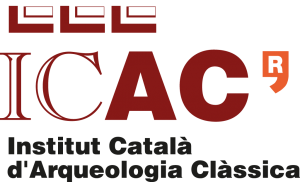ARCHO OF BERÀ
The Arch of Berà was erected to preside over the passage of the Via Augusta. The Arch of Berà is a large triumphal arch which has been reformed and transformed over time. The arch contains a laudatory inscription whose dedication makes reference to Lucius Licinius Sura, a member of Tarraco’s elite, originally from Celsa (Aragon), who relied on imperial support to build it. These types of arches had a sacred value and were built in important locations, such as the borders between two properties, or to mark the existence of a bridge or a river, etc.
ARCHITECTURE
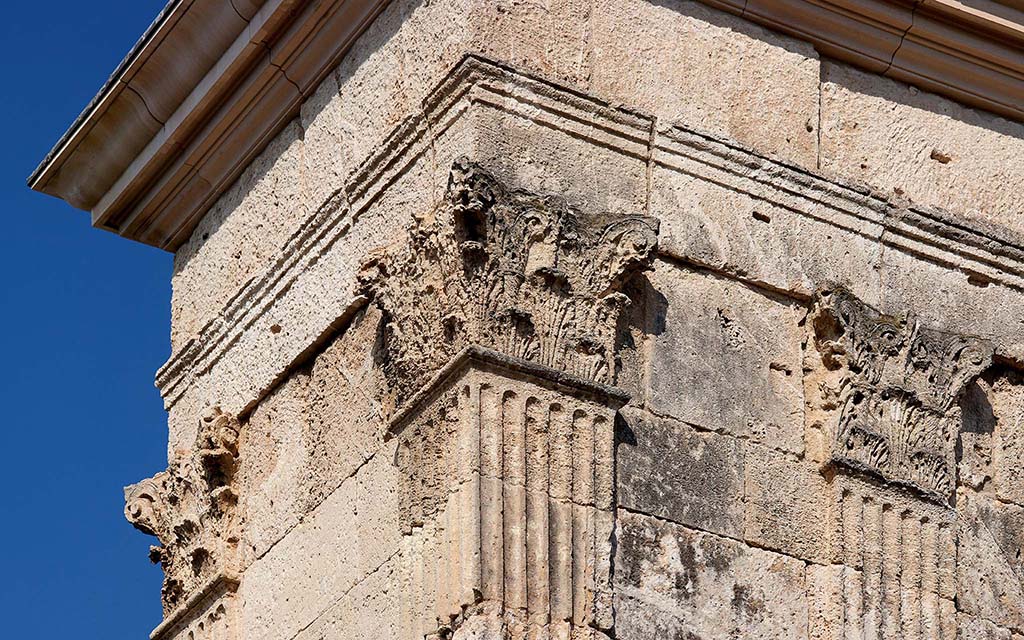
This is an arch with a single opening, with sides built on smooth baseboards and walls decorated with grooved Corinthian pilasters. We have to reconstruct the Berà Arch with a principal body that rests on two large baseboards or two-body rectangular podiums, a single central opening and two sides decorated with four lesenes in the form Corinthian columns, two on each side of the central opening. The lesenes and the central arch would be crowned by a simple entablature, with a smooth architrave without the fasciae or regular bands and an upper frieze that contained the final part of the dedicatory inscription with the testamentary clause, the explanatory verb of the action and the authorisation of the work.
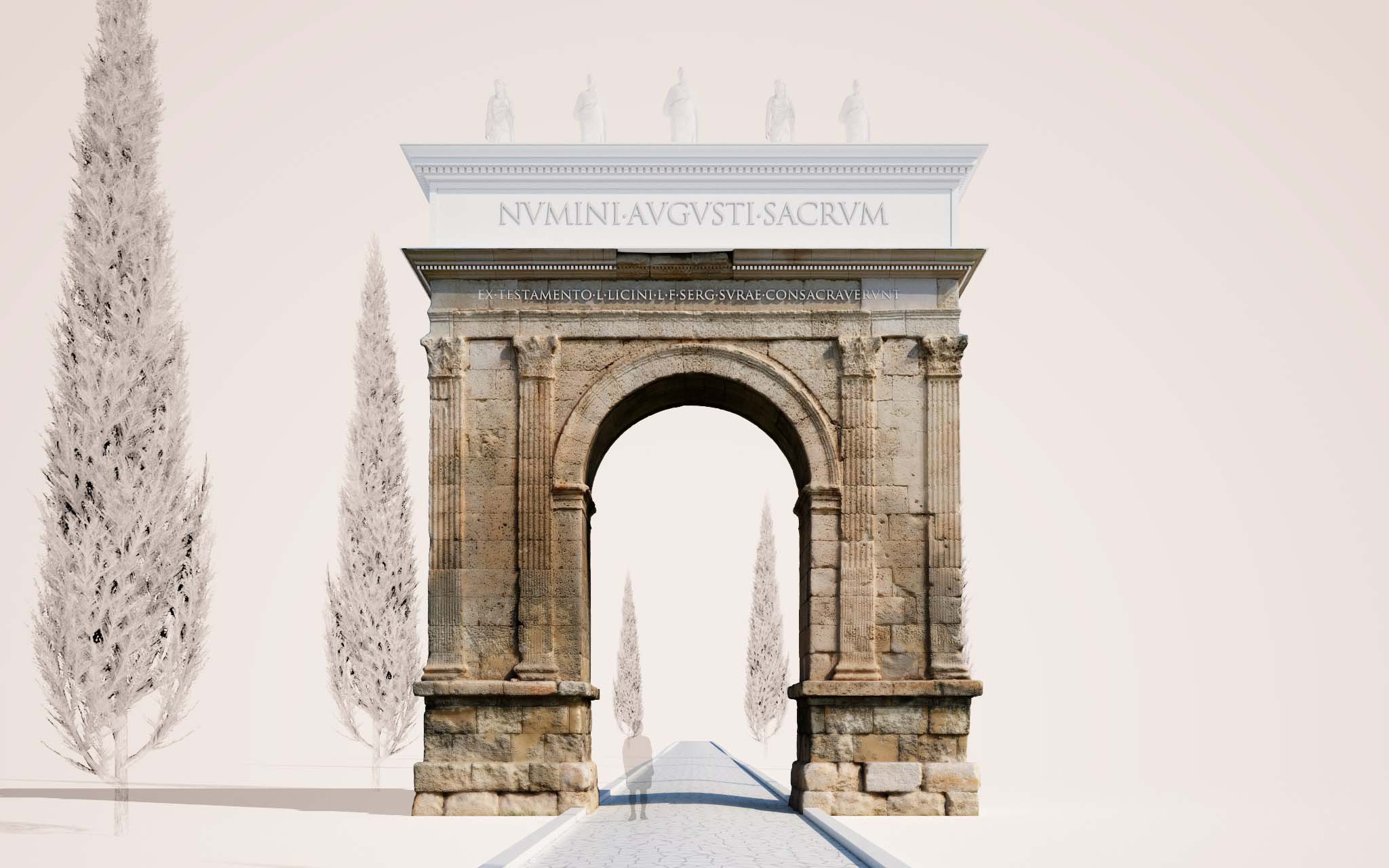
INSCRIPTION
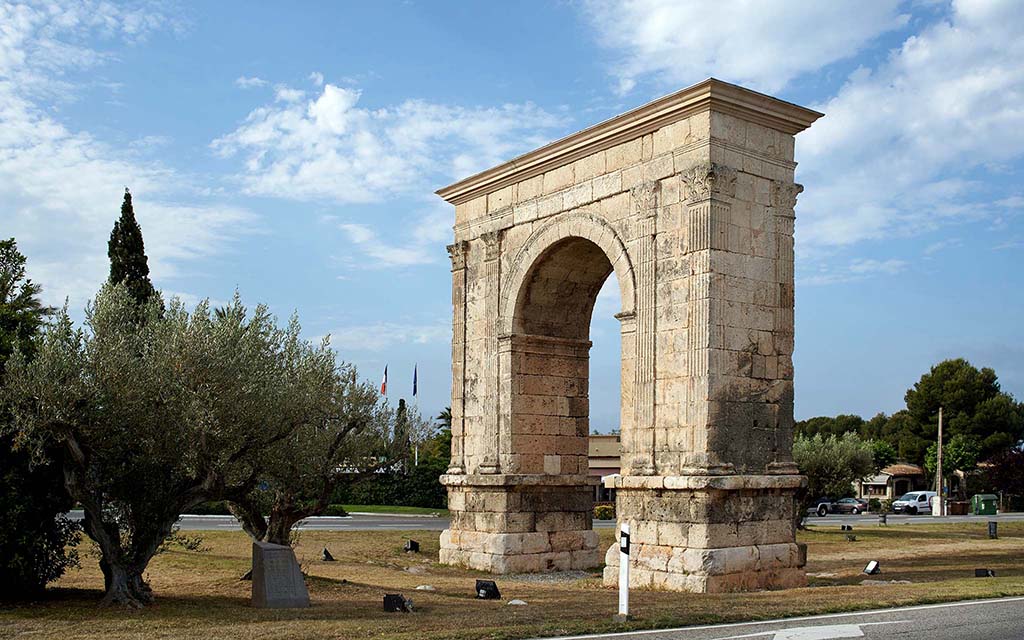
An epigraphic text is situated today above the architrave of the north face of the arch. Its original placement was actually on the opposite face. The fact that the inscription is well preserved allows it to be restored with precision: “Ex testamento L(uci) Licini L(uci) f(ilii) Serg(ia tribu) Surae consa[-cratum/craverunt]”, which translates as: «Consecrated following the clauses of the will of Lucio Licinio Sura, son of Lucio, member of the Sergia tribe». This text allows the construction to be associated with Lucio Licinio Sura and to associate him with the elites of the territory. Thanks to the epigraphic document it is possible to date the construction to between 15 B.C. and 5 A.D.

RESTORATION

Throughout its history, the Berà Arch has been repeatedly plundered, reformed and transformed, which has modified its original physiognomy. In the upper part, a pedestal or upper body would have been erected on which an epigraphic document would be written connected with what has in fact been preserved. It is quite likely that a gallery of bronze images was located above this structure with members of the imperial family. The crown of the arch thus would be much more sophisticated than what we find today.
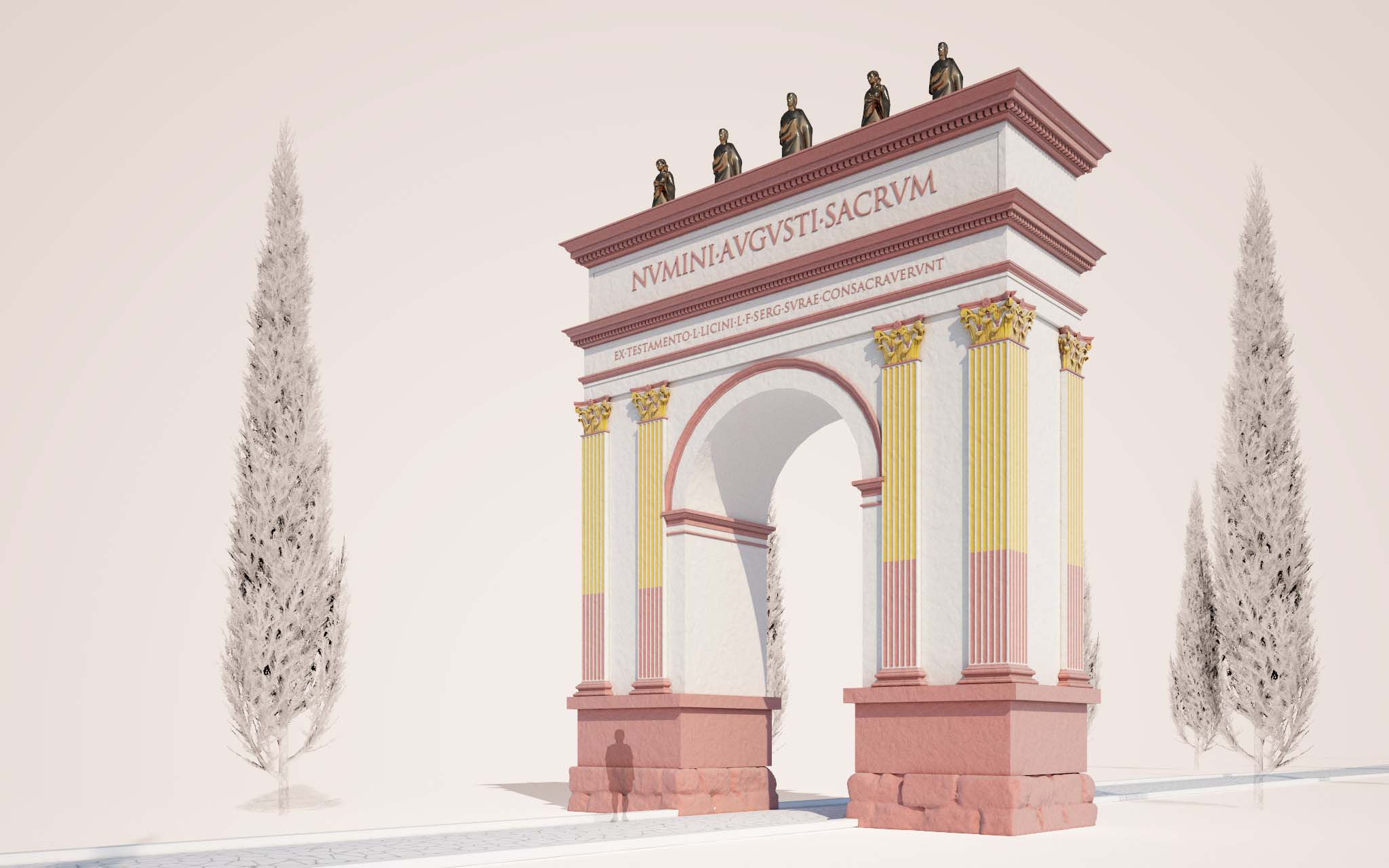
HISTORIOGRAPHY
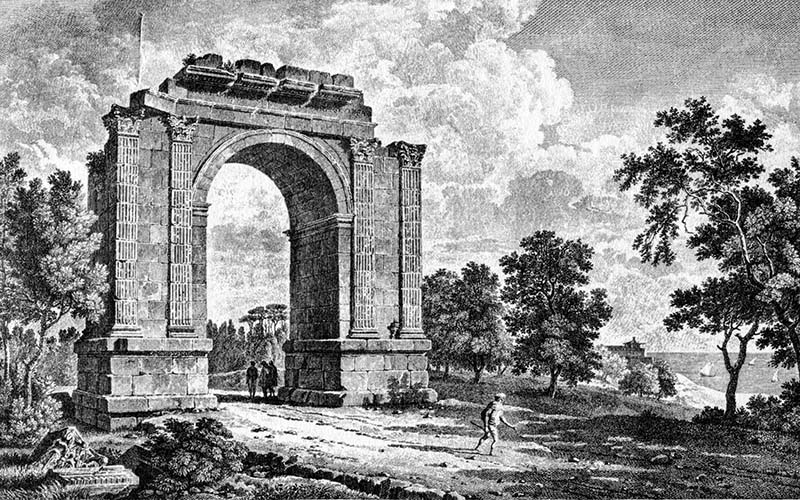
«In 1840, Queen Isabel II’s scheduled visit to Tarragona, accompanied by General Espartero, led to a major effort to restore the monument. The military commander of Tarragona decided to rechristen the arch as the Arch of Peace for the royal visit and adorn it as though it were the entry gate to Tarragona for a procession arriving from Barcelona. The work, well documented in the Baix Penedès County Archive, was made during the summer of 1840 and radically changed the physiognomy of the arch with a new crown.
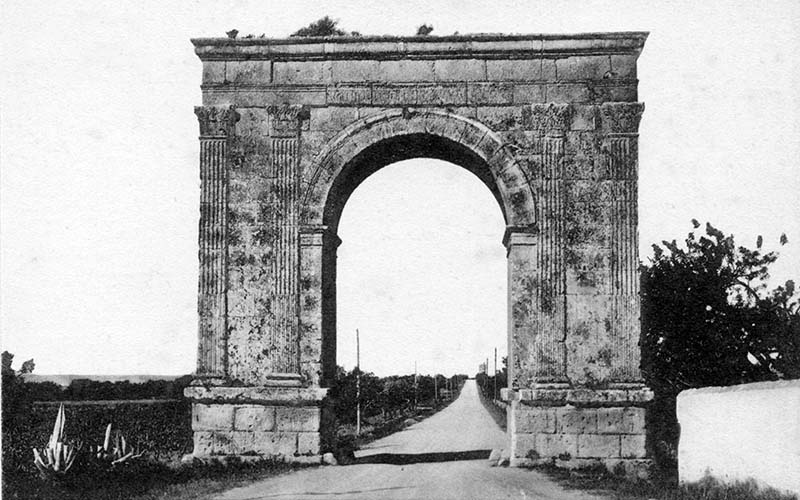
The path and later the road between Tarragona and Barcelona always passed below the arch, at least until the 1930’s. The rapid advance of cars made a faster highway necessary, which required the route to be diverted and go around the arch, as we can see today.»


